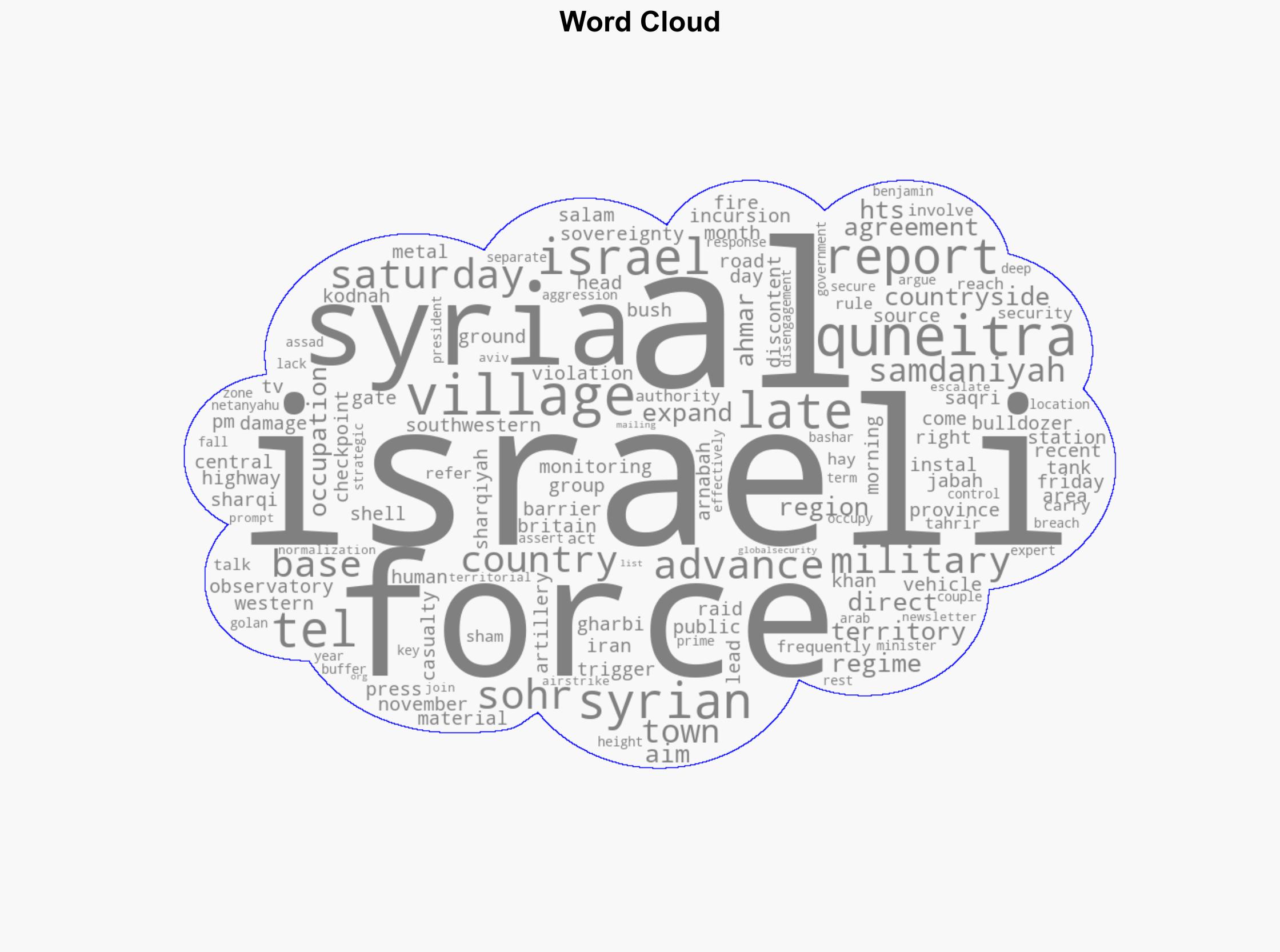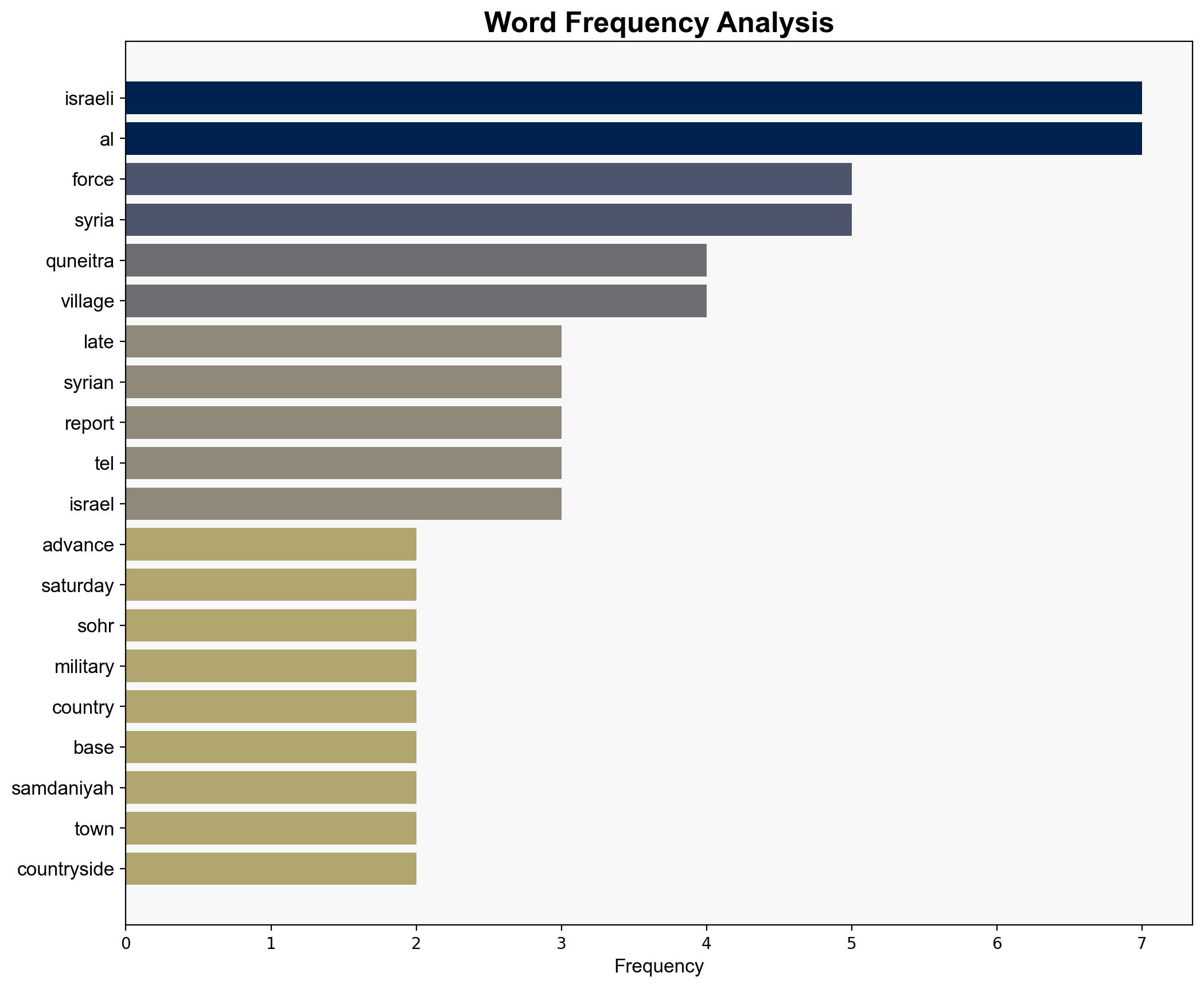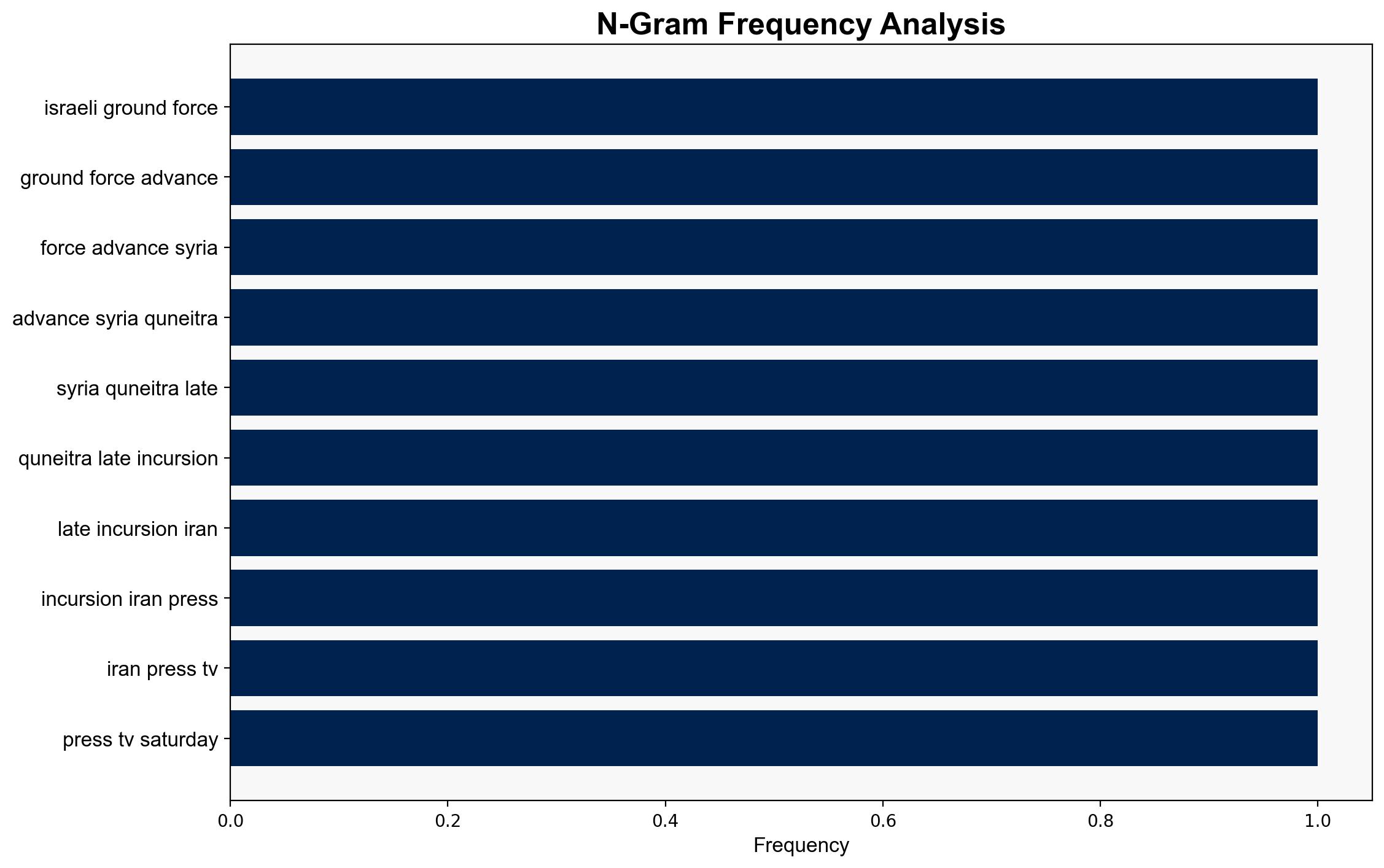Israeli ground forces advance into Syria’s Quneitra in latest incursion – Globalsecurity.org
Published on: 2025-11-03
Intelligence Report: Israeli ground forces advance into Syria’s Quneitra in latest incursion – Globalsecurity.org
1. BLUF (Bottom Line Up Front)
The most supported hypothesis is that Israel’s incursion into Syria’s Quneitra is a strategic move to establish a buffer zone and enhance security against perceived threats from Iranian-backed forces and Hay’at Tahrir al-Sham (HTS). Confidence level: Moderate. Recommended action: Monitor regional military movements and diplomatic communications to assess potential escalation and prepare for possible retaliatory actions.
2. Competing Hypotheses
Hypothesis 1: Israel’s incursion aims to establish a buffer zone to protect against Iranian-backed forces and HTS, enhancing security for the Golan Heights.
Hypothesis 2: The incursion is a tactical maneuver to pressure the Syrian government and its allies into negotiations or concessions, leveraging military presence as a bargaining chip.
3. Key Assumptions and Red Flags
– Assumption for Hypothesis 1: Israel perceives an immediate threat from Iranian-backed forces and HTS in the region.
– Assumption for Hypothesis 2: Israel believes military pressure will lead to diplomatic gains.
– Red Flag: Lack of direct response from Syrian or Iranian forces could indicate strategic patience or preparation for a larger counteraction.
– Missing Data: Detailed intelligence on the specific military capabilities and readiness of Israeli forces in the area.
4. Implications and Strategic Risks
– Potential escalation into broader conflict if Syrian or Iranian forces retaliate.
– Increased regional instability could disrupt economic activities and lead to humanitarian crises.
– Possible cyber retaliation or asymmetric warfare tactics by Iranian-backed groups.
– Geopolitical tensions may rise, affecting international diplomatic relations and alliances.
5. Recommendations and Outlook
- Enhance intelligence-gathering efforts to monitor military movements and communications in the region.
- Engage in diplomatic dialogue with regional allies to de-escalate tensions.
- Scenario Projections:
- Best Case: Diplomatic resolution leading to de-escalation and stabilization of the region.
- Worst Case: Full-scale military conflict involving regional and international actors.
- Most Likely: Continued low-intensity skirmishes with intermittent diplomatic engagements.
6. Key Individuals and Entities
– Benjamin Netanyahu
– Hay’at Tahrir al-Sham (HTS)
– Syrian Observatory for Human Rights (SOHR)
7. Thematic Tags
national security threats, regional focus, military strategy, geopolitical tensions





